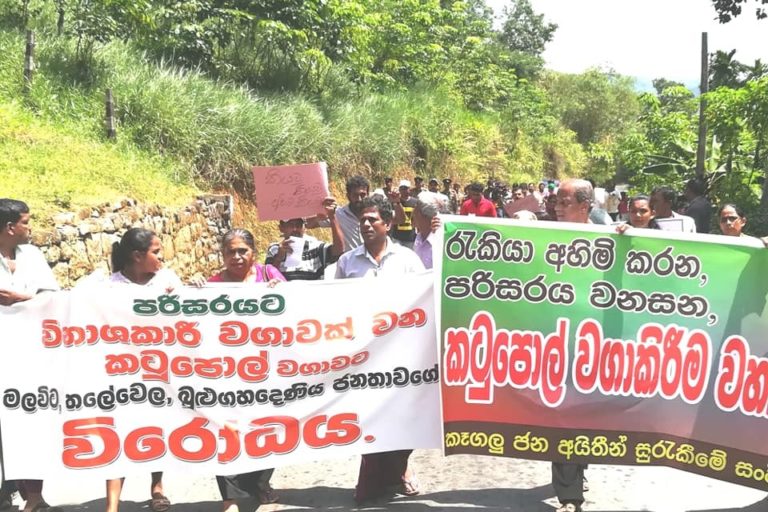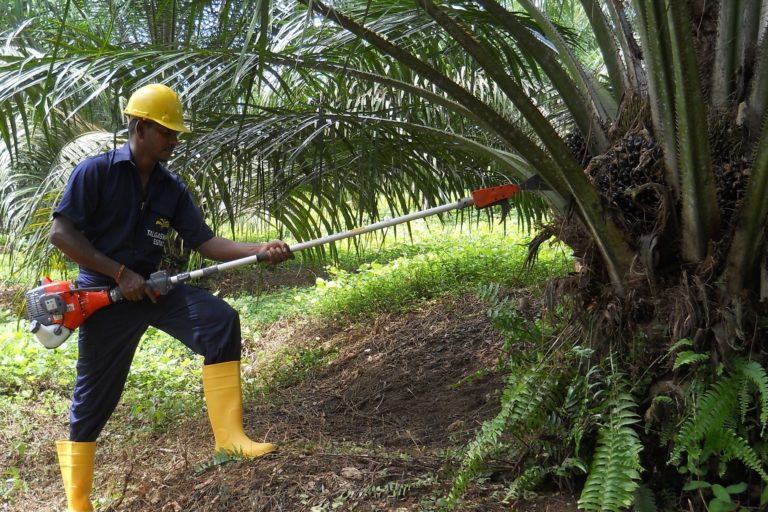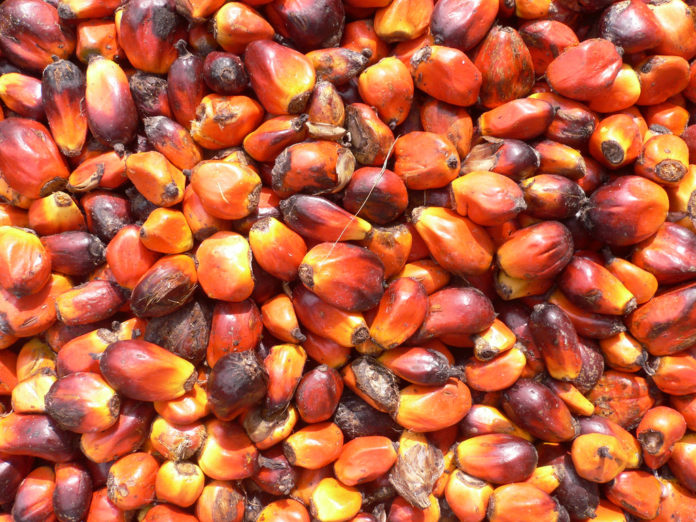Sri Lanka has imposed a ban on palm oil imports and ordered oil palm plantations in the country to be replaced with rubber trees and other crops over the next decade, citing adverse environmental and social impacts.
The decision is based on recommendations from a 2018 report by a panel of environmental experts, who linked oil palm plantations to soil erosion and the drying up of water sources.
Unlike in other countries where the crop is grown, oil palms aren’t a driver of deforestation in Sri Lanka; instead, they’ve replaced rubber plantations, which host a higher level of biodiversity and provide more jobs for locals.
Another concern is that oil palm is becoming an invasive species, occurring in the wild in a forest reserve, with as-yet-unknown impacts on native flora and fauna.
COLOMBO — Environmentalists have welcomed the Sri Lankan government’s surprise decision to ban palm oil imports into the country and raze existing plantations, but others say the science justifying the move is unfounded.
The government made the announcement in an April 5 gazette, citing recommendations from an expert panel formed by the Central Environmental Authority (CEA). The panel had identified soil erosion and drying of springs as among the potentially irreversible impacts of oil palm plantations on the island’s biodiversity and livelihood of local communities. Its report, published in 2018, outlined several recommendations to create the foundation for banning oil palm cultivation on the island.
Gamini Hitinayake, a member of the expert panel and professor in the Faculty of Agriculture at the University of Peradeniya, said the proliferation of oil palms threatened native plant and animal species.
“Oil palm is a threat to the existence of all traditional plantation crops such as rubber, tea, and coconut which are far more environment friendly,” he told Mongabay.
Invasive species
Siril Wijesundara, former director-general of the Department of Botanical Gardens and a member of a team documenting invasive alien plant species in Sri Lanka, said oil palms have been found growing naturally in the Indikada Mukalana forest reserve in the country’s west.
“Oil palm already shows signs of becoming an invasive species in Sri Lanka,” he told Mongabay. “As a precautionary measure to prevent oil palm becoming an invasive [species], it is important to prevent natural regeneration of oil palm seeds within and adjacent [to] oil palm plantations.”
Introduced to Sri Lanka in 1968, the African oil palm (Elaeis guineensis) doesn’t have a natural pollinator here. So the African oil palm weevil (Elaeidobius kamerunicus) was also brought into the country. While there are no documented reports of negative impacts associated with the beetle, more research needs to be done on it, said Jayantha Wijesinghe of the local environmental NGO Rainforest Protectors of Sri Lanka.
Water worries
Hitinayake said another of the main concerns regarding oil palm cultivation is that the tree absorbs a lot of water, leading to fears that it could dry up local streams. Oil palm is a fast-growing plant, and as such has a high rate of water consumption, especially during the growth stage, Hitinayake said.
Another issue the expert panel report highlighted was that oil palm plantations don’t have intercropping or undergrowth; they’re strictly monoculture, and so don’t support biodiversity. In contrast, the more common rubber plantations do support a relatively high level of biodiversity. Recent research shows endangered Indian pangolins (Manis crassicaudata) prefer rubber plantations as their prime habitat, after forests.
But rubber plantations have disappeared to make way for oil palms since the latter were first introduced here. Unlike in most of the other countries where oil palm is grown, notably top producers Indonesia and Malaysia, the crop’s commercial cultivation hasn’t driven large-scale deforestation in Sri Lanka. Instead, it has taken over rubber plantations, aided by tax concessions for seed imports and other incentives from the government.
That’s given rise to another complaint, this one about the social impact of oil palm plantations. Cultivating and harvesting the crop isn’t as labor-intensive as rubber or other crops, prompting fears and protests from villagers working in rubber plantations about a loss of livelihood.

Villagers protest against oil palm cultivation, citing adverse environmental impacts. Image courtesy of Jayantha Wijesinghe.
Planting violations
There are about 11,000 hectares (27,000 acres) of oil palms planted across Sri Lanka. “But in many instances, the planters violate basic guidelines issued for cultivation,” Wijesinghe said.
He noted that it’s prohibited to plant oil palms on slopes steeper than 30 degrees, but in some places, they’re cultivated on slopes steeper than 60 degrees. There’s also a prohibition on planting in wetlands or on riverbanks, but this too is often breached, Wijesinghe said.
Under the government’s new stance on palm oil, all imports will be banned. The country buys about 200,000 metric tons of the vegetable oil annually, mostly from Malaysia. The new policy also calls for razing 10% of oil palm planted area every year and replanting with rubber and other crops that are less water-intensive.

‘Unfounded’ argument
The pushback to the announcement was immediate. Asoka Nugawela, an emeritus professor in the Faculty of Agriculture at Wayamba University, took issue with the CEA expert panel’s suggestion that oil palm plantations could dry up local water sources.
He said oil palm in Sri Lanka is generally cultivated in areas where annual rainfall exceeds 3,500 millimeters (138 inches), while their water requirement is about 1,300 mm (51 in). So the argument that they could cause springs to run dry isn’t true, Nugawela said.
“If you visit oil palm plantations, you can witness healthily flowing streams full of life,” he told Mongabay.
He noted that the Nakiyadeniya estate, Sri Lanka’s first oil palm plantation, has been running now for more than 50 years, with no sign of water problems in the area. A 2018 study described a new species of freshwater fish in a stream in Nakiyadeniya; Nugawela said this proves that the streams drying up argument is unfounded.
He said climate change is a more likely factor impacting water availability, with rainfall patterns becoming more erratic. He also said the issue of soil erosion is a management problem for which there are remedial measures that can be taken.
The Palm Oil Industry Association of Sri Lanka has also rejected the expert panel’s recommendations that justify the ban, and has called the science into question. It says companies have invested heavily in oil palm cultivation with the encouragement of successive governments and will be appealing against the ban.
Banner image of oil palm fruits, from which palm oil is derived. Oil palm has a higher yield per acre than any other vegetable oil crop. Image via Pixabay.








